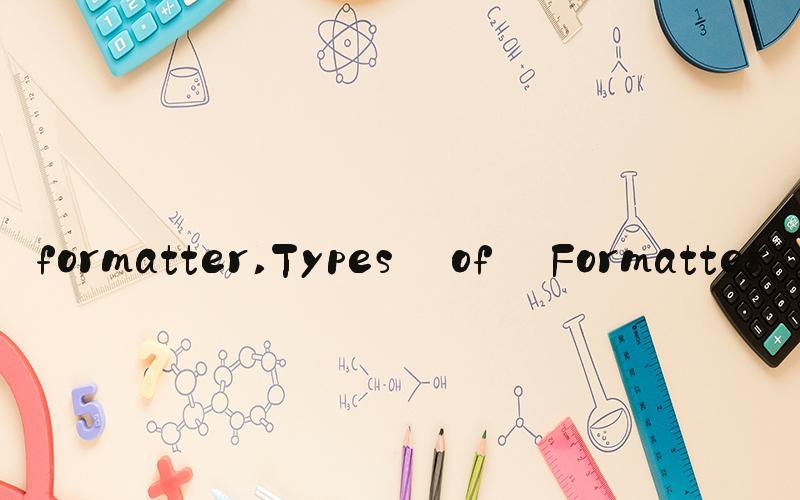 Formatter
FormatterFormatter is a tool that performs formatting operations on text or data. It is mostly used in computer programming to format data in a particular way so that it can be easily read by human beings or other applications. The use of formatter is not only limited to programming but is also adopted in various fields such as formatting documents, emails and web pages.
Types of FormatterThere are various types of formatters but the most common ones include:
1. Text FormatterThis type of formatter is used to format text in a document or file. It can be used to change the font type, size, color or alignment of text. It is commonly used in word processors and text editors to make the text more readable and attractive.
2. Date FormatterThis type of formatter is used to format date and time in a particular way. It can be used to display dates and time in different formats such as month/day/year or day/month/year. It is commonly used in applications that require the manipulation of date and time data such as calendars and scheduling applications.
3. Numeric FormatterThis type of formatter is used to format numeric data such as currency, percentages or numbers. It can be used to format data in a particular way such as adding commas to large numbers or rounding decimals to a specific number of places. It is commonly used in financial applications and data analysis tools.
Benefits of Using FormatterThe use of formatter brings numerous benefits that include:
1. ConsistencyWhen data is formatted consistently, it becomes easier to read and understand. This is especially true for large sets of data where consistency is crucial for data analysis and decision-making. Formatter ensures that data is always formatted in the same way, making it easier to compare and analyze.
2. AccuracyThe use of formatter ensures that data is accurately displayed and presented. This is especially important in financial applications where errors in data formatting can lead to significant loss of money.
3. Saves TimeUsing formatter saves time by automating the formatting process. This saves programmers and other users a lot of time that would otherwise be spent on manually formatting the data. It also ensures that formatting is done quickly and accurately.
4. ProfessionalismUsing formatter gives a professional look to documents, reports and other data. It makes data look presentable and attractive, which is important in business and other professional fields where first impressions matter.
ConclusionIn conclusion, formatter is a valuable tool that is used to format data in a particular way. It brings numerous benefits including consistency, accuracy, saving time and adding professionalism to documents and reports. The use of formatter is not only limited to programming but has been adopted in various fields such as formatting documents, emails and web pages.
